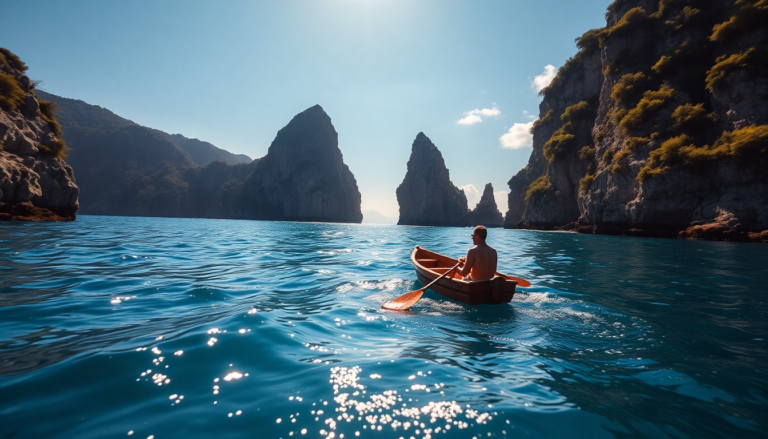Argomenti trattati
In a move toward sustainable tourism, Capri is gearing up to implement significant changes regarding access to its renowned Faraglioni. As a response to the challenges posed by overtourism, local authorities are considering restricting access to this stunning natural landmark to swimmers and rowboats only, starting in the near future. This initiative aims to preserve the area’s natural beauty and ecological balance, making it a vital example of how tourism can evolve to protect precious resources.
The significance of the Faraglioni
The Faraglioni are more than just a picturesque sight; they represent an iconic symbol of Italy and attract millions of visitors each year. However, the influx of tourists arriving by speedboats and yachts has led to significant environmental stress. The constant movement of vessels creates disturbances that threaten the delicate marine ecosystem surrounding these cliffs. The overwhelming popularity of the Faraglioni has turned what was once a serene natural wonder into a chaotic spectacle of tourism.
This situation has prompted a critical examination of how tourism is conducted on the island. The beauty that made the Faraglioni a global icon is now at risk due to noise pollution, artificial waves, and the sheer volume of boats, all of which disrupt the natural habitat. The proposed changes aim to address these issues by promoting a more respectful and sustainable form of tourism.
The impact of overtourism on Capri
Capri has faced extreme overtourism, especially during peak seasons when the island’s infrastructure struggles to accommodate the overwhelming number of visitors. Narrow streets, crowded ports, and packed beaches create significant challenges for residents and tourists alike. This type of tourism often prioritizes quick visits over meaningful experiences, leading to a loss of cultural identity and environmental degradation.
While mass tourism generates immediate financial gains, its long-term consequences can be detrimental. The ecological footprint of numerous boats, combined with the strain on local services and resources, poses a serious threat to the island’s charm and sustainability. Therefore, the initiative to protect the Faraglioni is part of a broader strategy to restore balance between tourism and environmental stewardship.
Future prospects for Capri
The year ahead may mark a pivotal turning point for Capri, especially with potential legislative changes regarding marine reserves. Plans to designate the area around the Faraglioni as a protected marine park could lead to stricter regulations on access, ensuring that only those who explore the area sustainably can enjoy its beauty. This shift would incorporate rigorous guidelines that prioritize ecological preservation while still allowing for tourism.
Under the new regulations, access to the Faraglioni would be restricted to swimmers and non-motorized boats, such as canoes and rowboats. This approach not only aims to restore tranquility to this breathtaking landscape but also seeks to enhance the visitor experience by encouraging more profound connections with nature. The hope is that this initiative will serve as a model for other tourist destinations grappling with similar challenges.
A vision for responsible tourism
The administration’s vision is clear: to foster a tourism model that emphasizes quality over quantity, respecting the island’s natural rhythms and ecosystem. This transition to a protected area is not intended to deter visitors but rather to inspire a more authentic and mindful exploration of Capri. A slower-paced tourism experience can lead to enriched interactions with the environment and community, ultimately benefiting the local economy.
Lorenzo Coppola, president of Federalberghi Isola di Capri, highlights the importance of finding a balance between environmental sustainability and economic viability. While tourism is essential for Capri’s economy, it must be managed responsibly. Establishing a marine park presents a unique opportunity to create a sustainable development model where environmental protection is integral to the tourism experience.
The courage to change
Capri’s decision to limit access to the Faraglioni reflects a courageous and forward-thinking approach to tourism management. In a time when many destinations struggle under the weight of excessive visitor numbers, Capri is choosing a path of conservation and sustainability. This potential shift could not only redefine the regulatory landscape but also reshape perceptions of tourism, emphasizing respect for natural and cultural heritage.
As Capri embarks on this journey toward a more sustainable and responsible tourism model, the hope is that it will inspire other locations to follow suit. The Faraglioni may once again become what they were always meant to be: a sacred, peaceful enclave immersed in nature.

